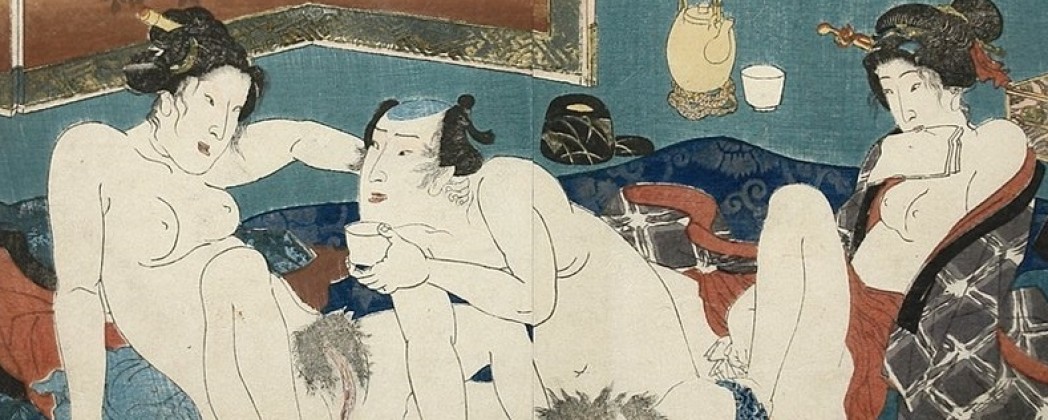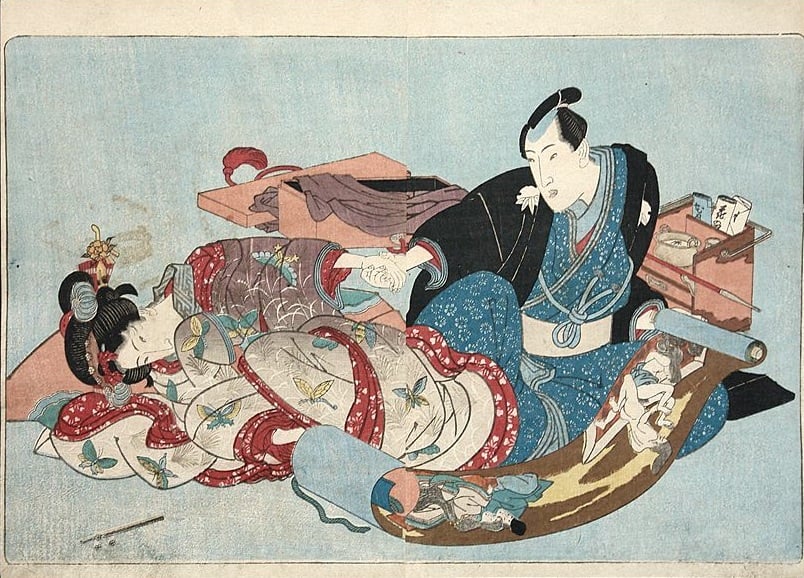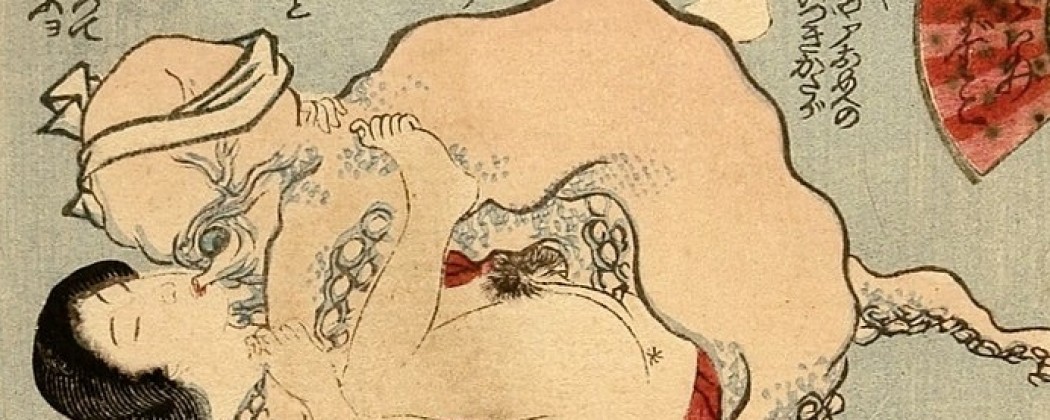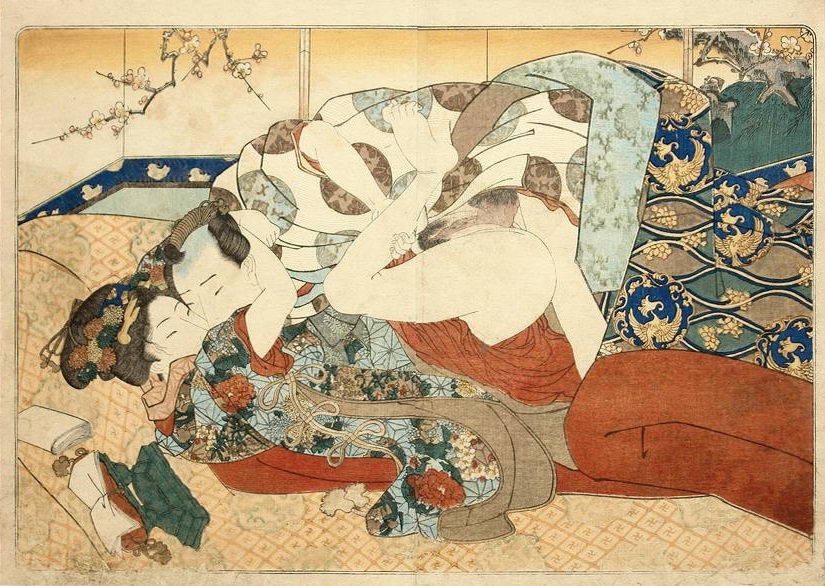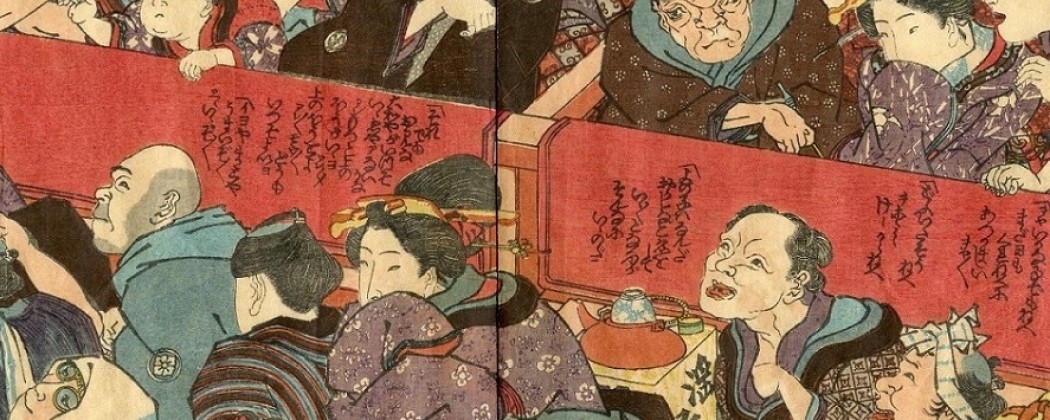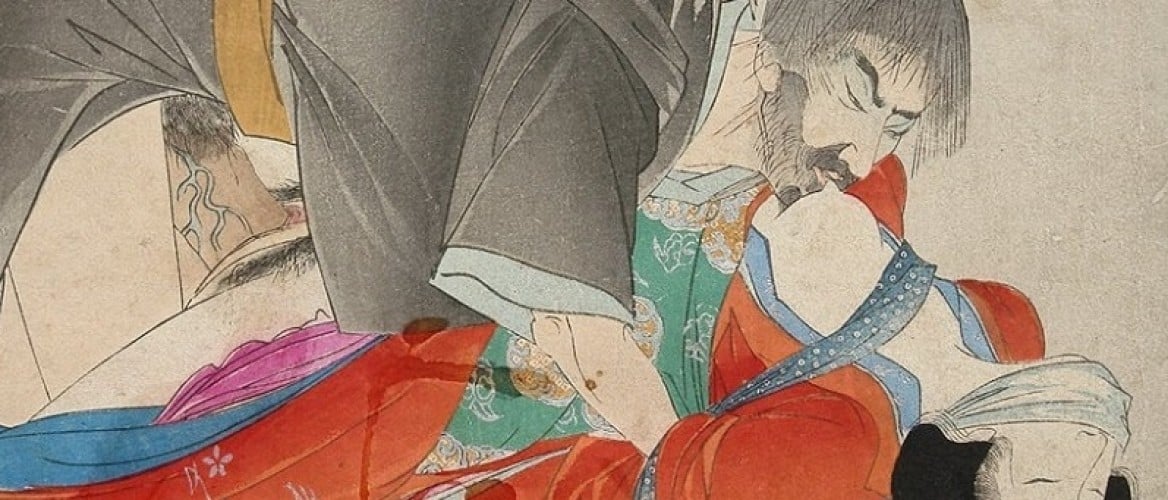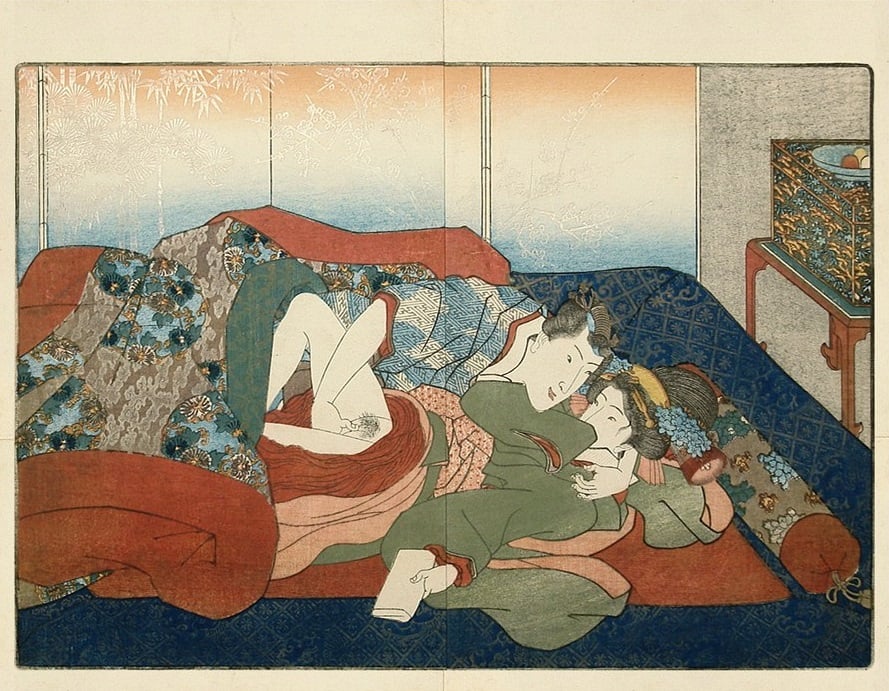
This Kunisada design is from a luxuriously printed book which was an erotic elaboration of the author Ryûtei Tanehiko (1783-1842), who collaborated with Kunisada on various books in the late 1830s that were erotic variations on the novel ‘Imitation Murasaki-Rustic Genji (Nise Murasaki inaka Genji)’, these were censored in 1842 due to the Tenpo Reforms for being sensual and generally too sumptuous.

‘Mitsuuji and the courtesan Tasogare‘ (c.1837) from the series ‘Rustic Genji suma koto (Sumagoto inaka Genji)‘ Designed by Utagawa Kunisada (Available Euro 625,-)
Mitsuuji and Tasogare
The above scene is about Mitsuuji and the courtesan Tasogare (a well-known Japanese love story) who are in the Misjujimachi pleasure quarter in Kyoto. While the mother of Tasogare and Mitsuuji’s attendant are in a deep sleep in the other room, Tasogare lays her head on Mitsuuji’s knee and flirts with him. The text reveals the following:
“Mitsuuji puts his left hand on the shoulder of Tasogare and his right hand at the place of her “hidden door”…When he fondles her clitoris, Tasogare moves her body against his and closes her eyes.” (based on a translation of Laura Moretti)
“Even coarse mountain people feel the desire to rest for a while beneath lovely cherry blossoms. Although everyone in the world wishes this, Tasogare could never have imagined that the eminent Mitsuuji would show any interest in her, but that night she would sleep next to her beloved. The two lovers exchanged vows as deep as those made by the lovers who condensed a thousand nights of love into a single night, and their devotion to share even more vows ended only when rooster crowed at dawn.” (based on a translation of Chris Drake)
The ‘Rustic Genji suma koto‘ -series is luxuriously printed with metallic pigment, burnishing and embossing (karazuri-e). The series was a renewed variation of the classic eleventh-century novel, ‘The Tale of Genji (Genji monogatari)‘, including additional intrigue, dramatic plot-twists and new trends.
Click here to check out an insightful article on Kunisada’s ‘Bedroom Guide to Spring Scenes‘-series (also an adaptation of the ‘Tale of Genji (Genji monogatari)’!
This piece is still available in our gallery. You can find it if you scroll down on the following page!
Source: The Fitzwilliam Museum

